There are three widgets at the top of your food log that display information about your energy and macronutrient intake and targets over different time scales. You can swipe between widgets to toggle between them. The “Nutrition & Targets” widget displays your current day of eating in the context of your weekly targets and intake, the “Energy Balance” widget displays your last month of eating in relation to your expenditure and nutrition targets, and the “Daily Nutrition” widget displays information about your current day of eating.
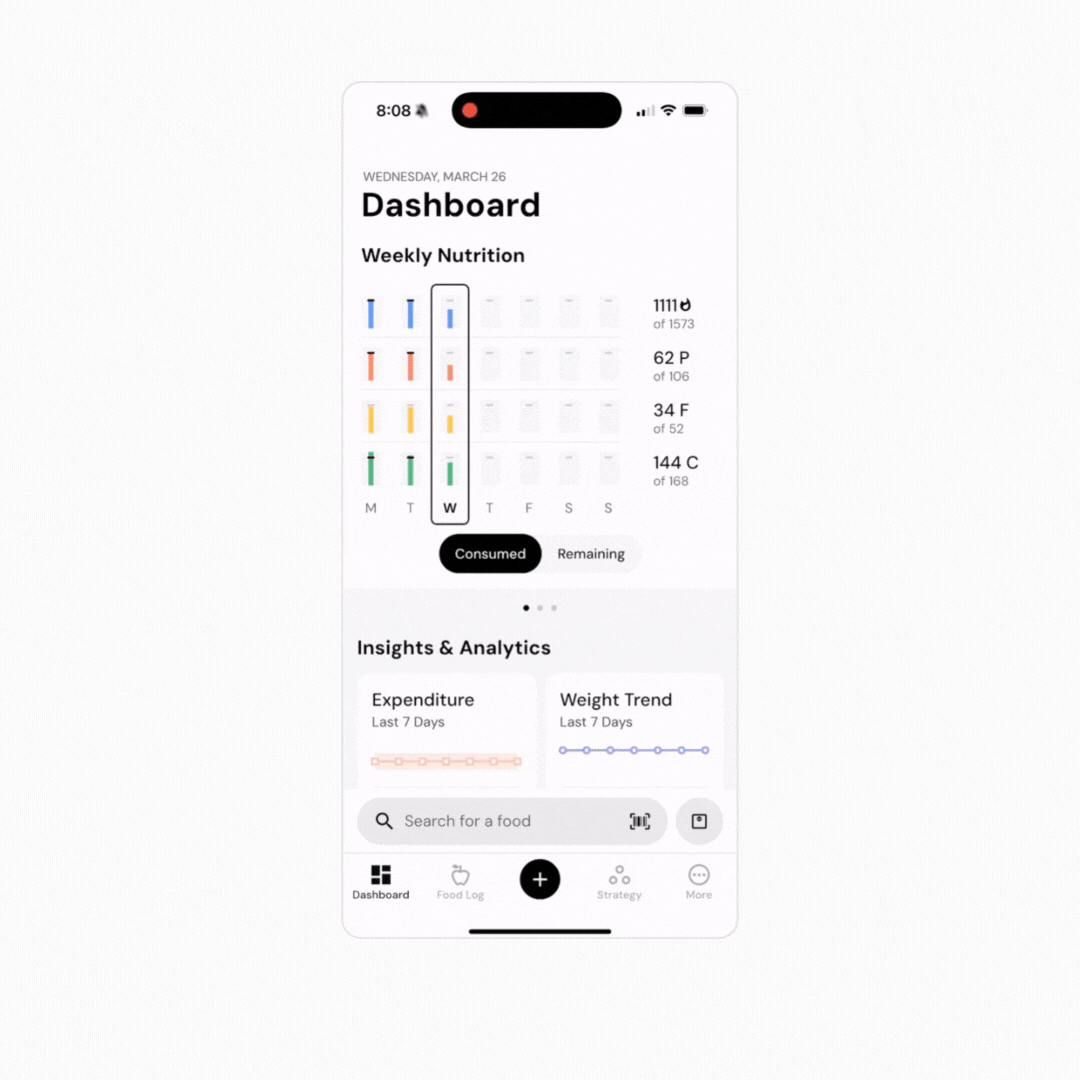
The Nutrition & Targets widget is the first one that new users see. It provides you with an overview of your calorie and macronutrient intake, and your calorie and macronutrient targets for the full week, with the current day in focus.
On the right side of the widget, you can view your energy and macronutrient intake and targets for the highlighted day (which will be the current day, by default). The amount you’ve consumed will be the top, bold values, and your intake targets for the day are the bottom, lighter values. Energy intake and targets are represented by a fire icon; P stands for “protein,” F stands for “Fat,” and C stands for “Carbohydrates.”
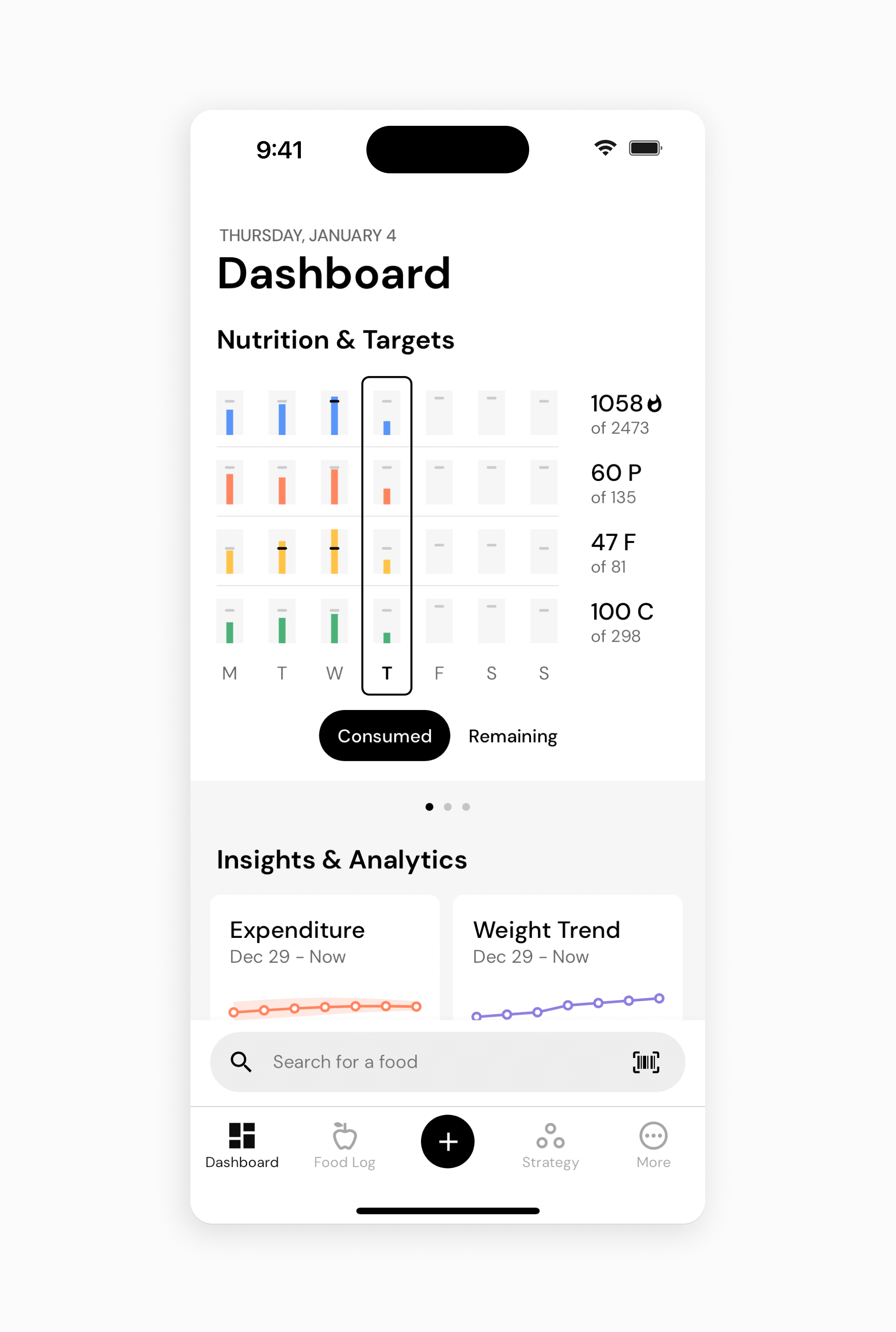
There is a box around the bars corresponding to your energy and macronutrient targets for the highlighted day. You can tap on the bar graphs for another day to bring that day into focus instead.
You can also tap on the currently selected day to unselect it, and view your energy and macronutrient intake and targets for the entire week.
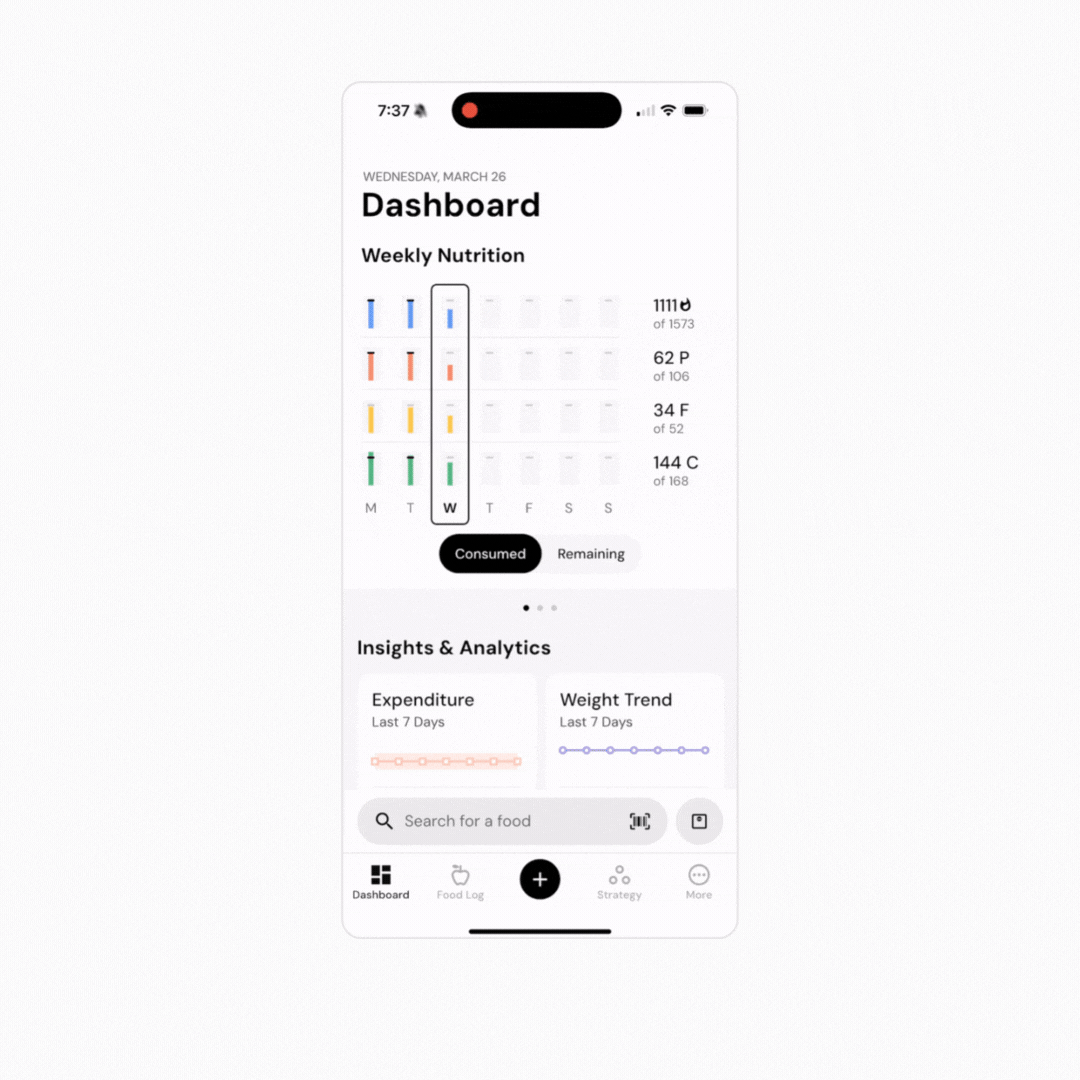
You can toggle between “Consumed” and “Remaining” views. If you select “Consumed,” you’ll see your energy and macronutrient intake targets for the day, along with the amount of energy and the quantity of each macronutrient you’ve logged thus far. If you select “Remaining,” you’ll still see your energy and macronutrient intake targets for the day, and the quantities of energy and each macronutrient you can still consume before reaching your intake targets for the day. For example, if your energy intake target is 2000 Calories, and you’ve consumed 600 Calories so far, the “Remaining” view will show you that you still have 1400 Calories remaining for the day.
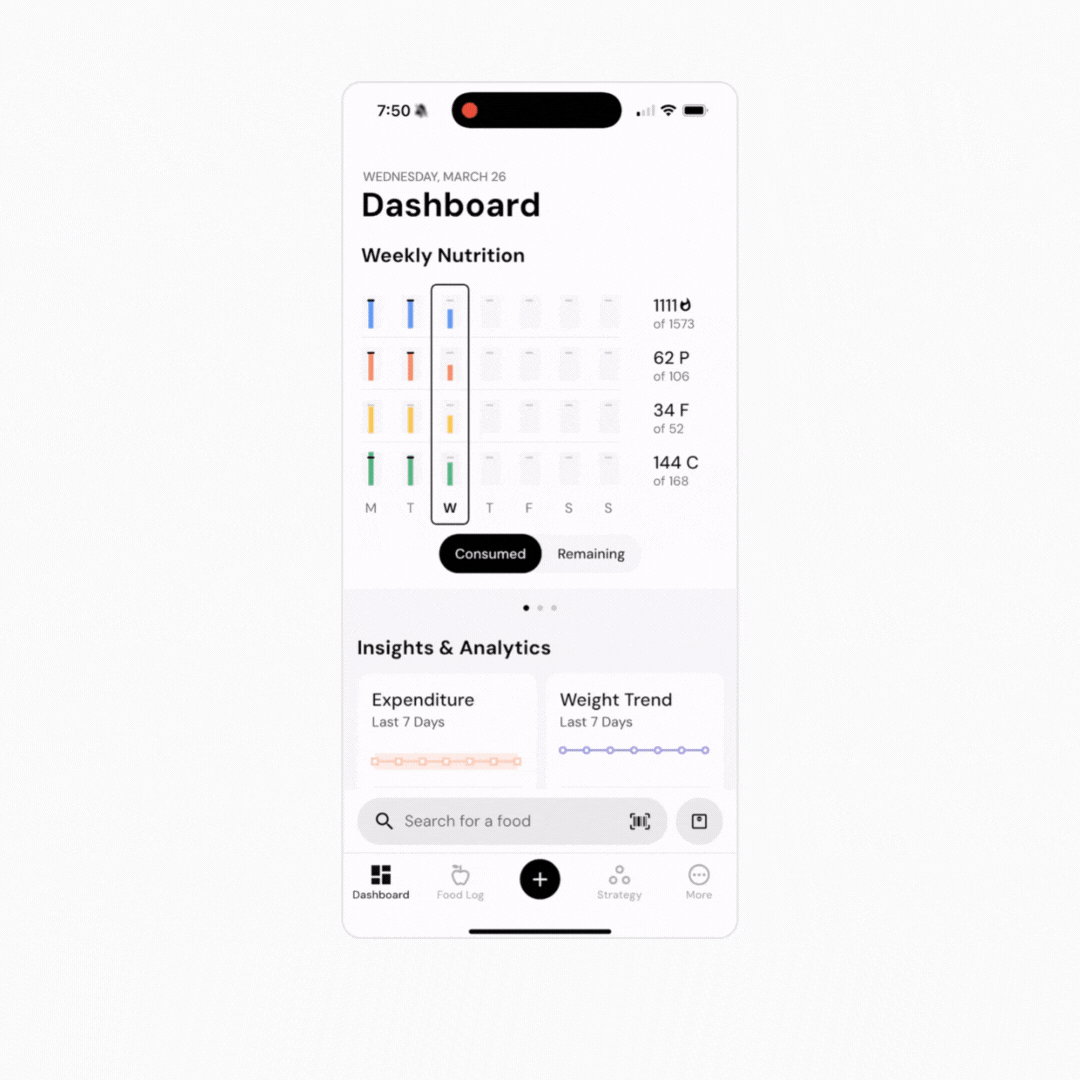
Finally, as a quick visual indicator of when you’ve reached your energy and macronutrient targets for the day, the line indicating your intake targets will turn a bolder shade (turning from gray to black in Light Mode, and from gray to white in Dark Mode) once you’ve reached your target.
The second widget is the Energy Balance widget. It displays your last month of eating in relation to your expenditure and nutrition targets. This lets you see how well you’ve been sticking to your energy intake targets, and whether you’ve generally been consuming more or less than your energy expenditure (i.e., it will show you whether you’ve generally been in an energy deficit or an energy surplus).
When you have the “Targets” view selected, the Energy Balance widget will display your energy intake and your energy intake targets for the past month. Your daily intake targets are represented by the yellow dotted line, while your daily energy intake is represented by the blue bars. So, at a glance, you can quickly see whether you’ve been sticking to your energy intake targets quite well, or whether you’ve generally been consuming a bit more or a bit less than your daily energy intake targets.
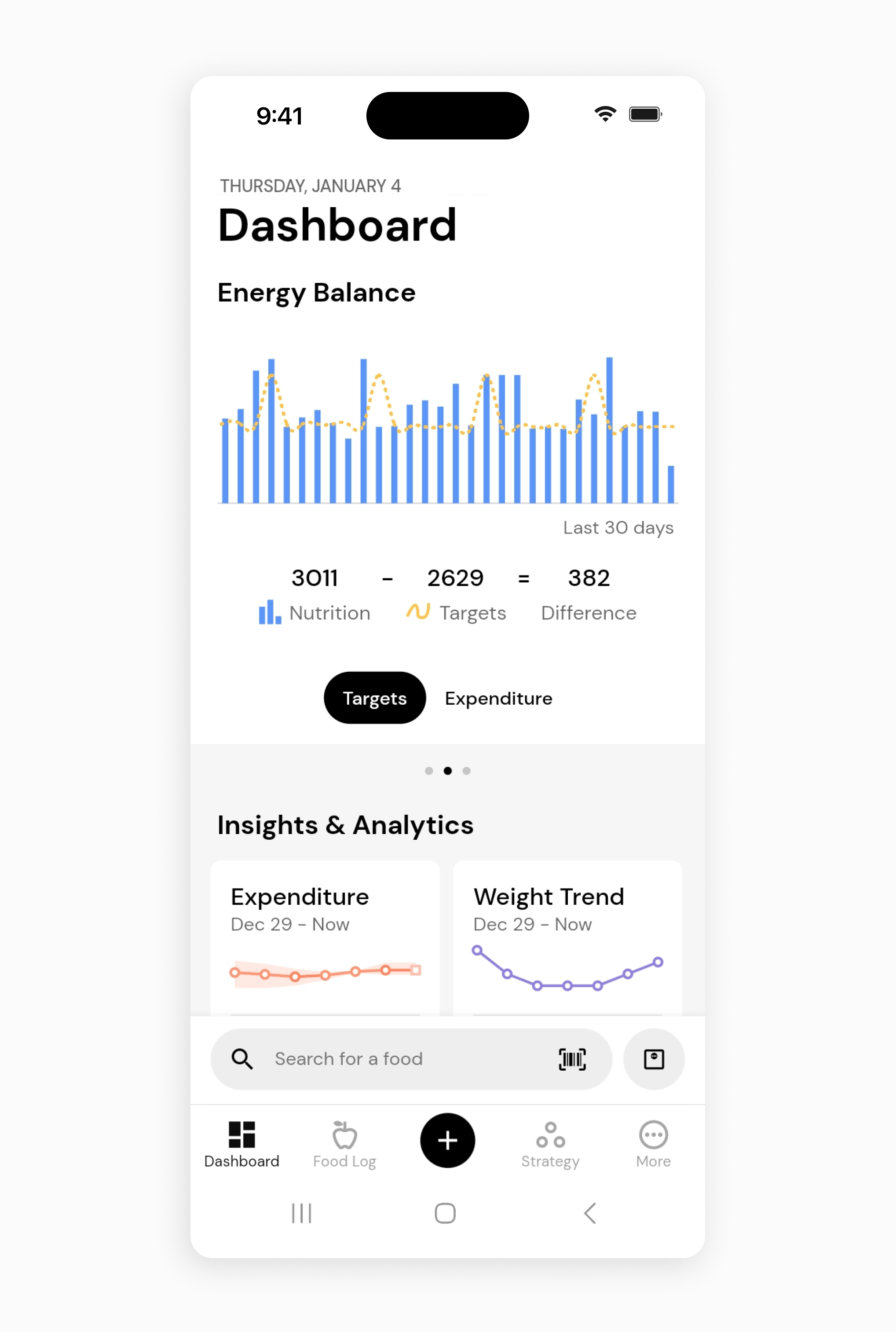
For the past month, my average energy intake has been 3011 Calories, and my average energy intake recommendation has been 2629 Calories. So, my energy intake has exceeded my intake recommendations by an average of 382 Calories per day.
The little math equation below the graph shows your average energy intake (in Calories) for the past month, and your average energy intake targets for the past month. The “Difference” tells you whether you’ve generally been consuming a bit more than your intake targets for the past month (represented by a positive number), or a bit less than your intake targets for the past month (represented by a negative number).
When you have the “Expenditure” view selected, the Energy Balance widget will display your energy intake and your calculated expenditure for the past month. Your expenditure is represented by the orange dotted line, while your daily energy intake is represented by the blue bars. So, at a glance, you can quickly see whether you’ve been consuming more energy or less energy than you’ve been expending for the past month (i.e., you can see whether you’ve generally been in an energy surplus or an energy deficit).
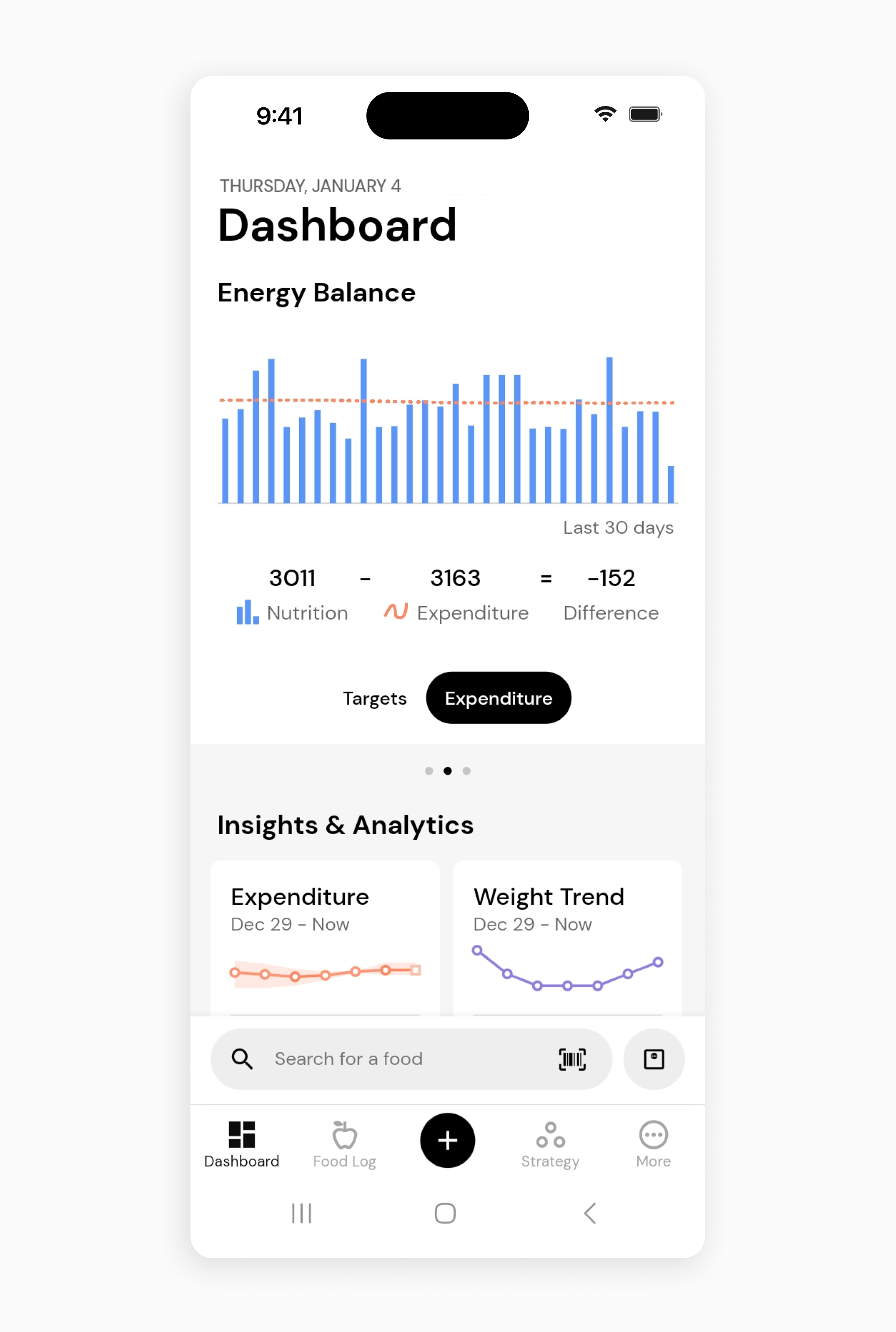
For the past month, my average energy intake has been 3011 Calories, and my average expenditure has been 3163 Calories. So, despite exceeding my energy intake targets, I’ve still been in an average energy deficit of 152 Calories per day for the past month.
The little math equation below the graph shows your average energy intake (in Calories) for the past month, and your average energy expenditure for the past month. The “Difference” tells you whether you’ve generally been in an energy surplus for the past month (represented by a positive number), or an energy deficit for the past month (represented by a negative number).
For more on the Energy Balance widget, you might also enjoy this article from the knowledge base.
The “Daily Nutrition” widget prominently displays information about your current day of eating.
Going from left to right, the numbers at the top tell you how many Calories you have remaining for the day, how many Calories you’ve already consumed, and your energy intake target for the day. The second row of numbers display your macronutrient intakes and targets for the day. If you toggle to the “Remaining” view, you can instead view your macronutrient targets for the day, and how much of each macronutrient you have remaining.
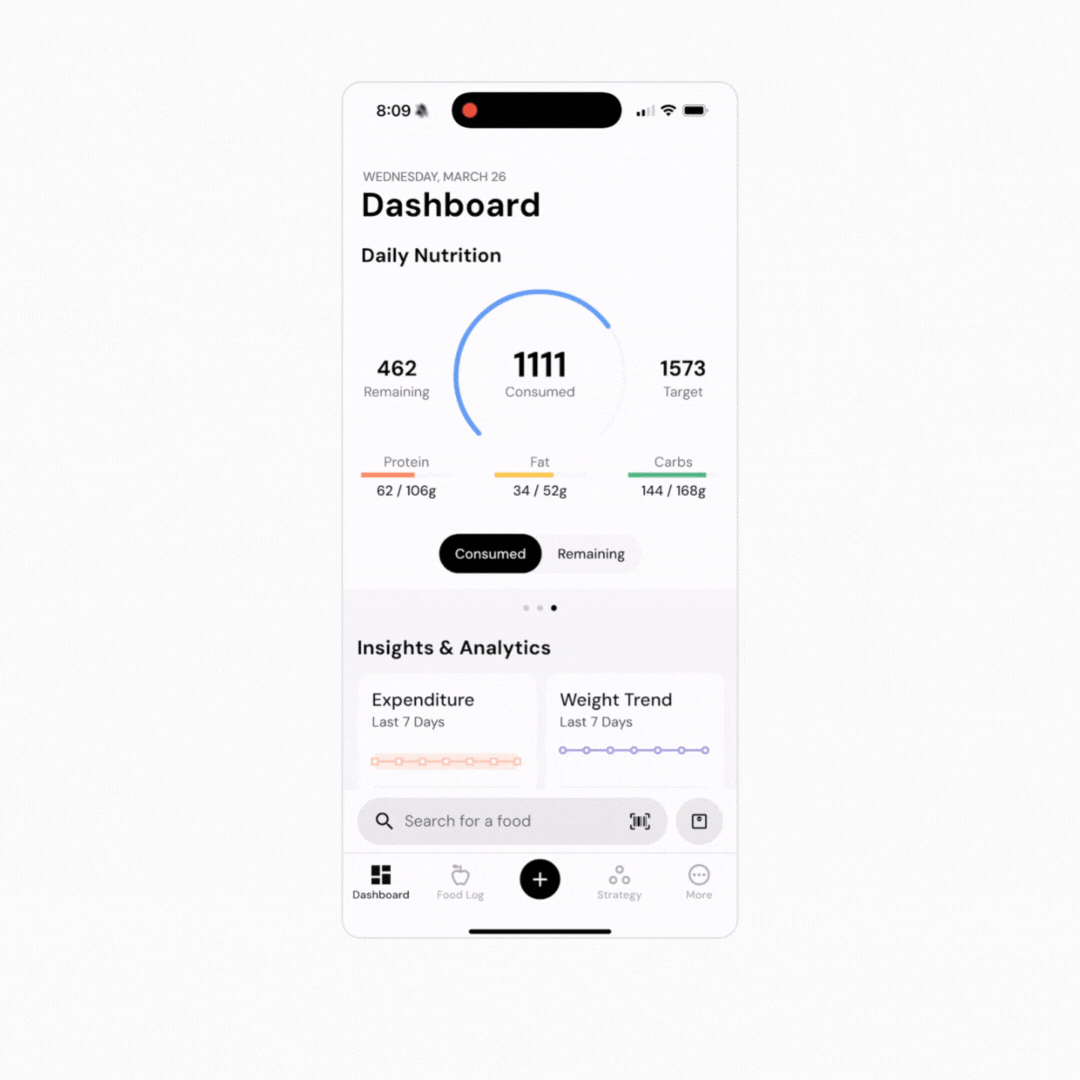
Now that you understand your dashboard widgets, you might enjoy one of these articles next:
How to Customize your Dashboard
Pin Nutrients to the Dashboard
How to Log Food in MacroFactor